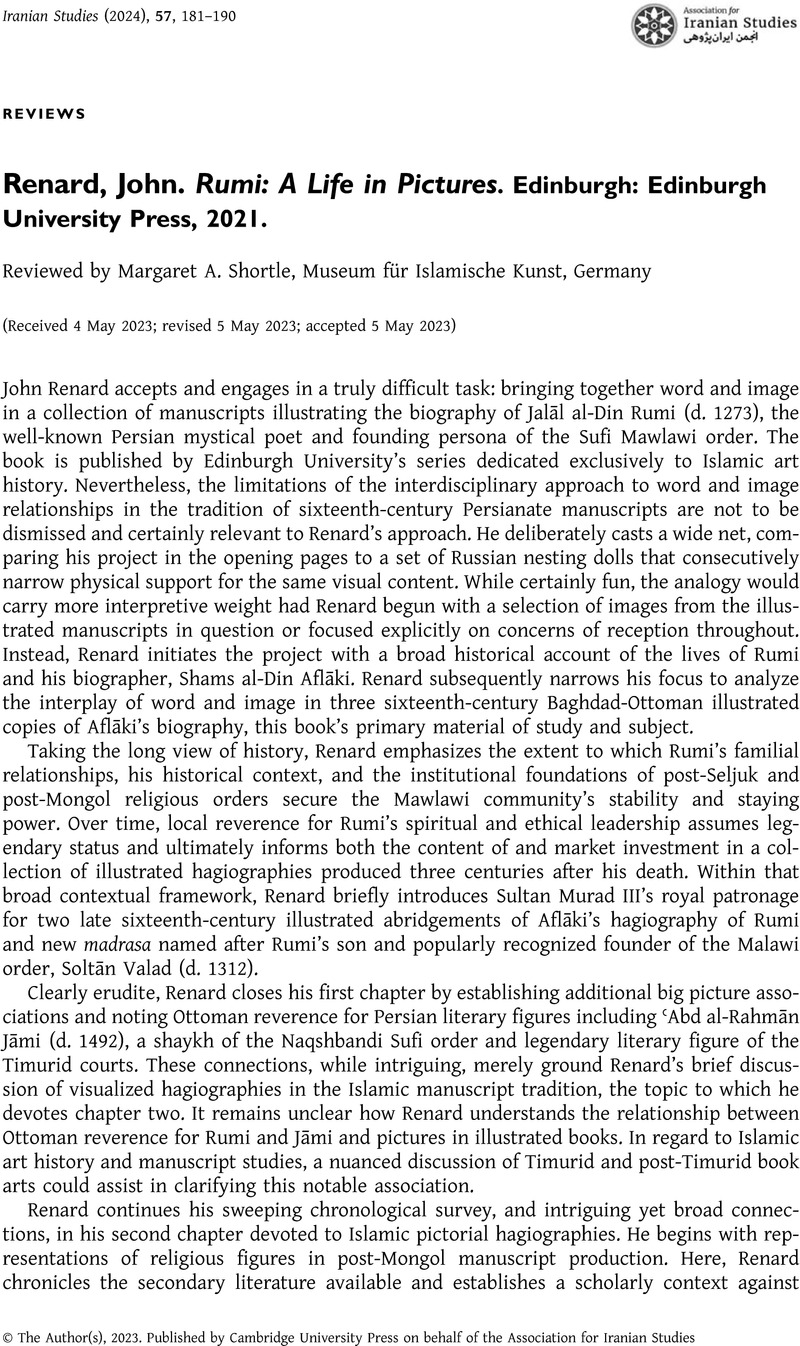No CrossRef data available.
Published online by Cambridge University Press: 23 October 2023

1 Lewis, Frank, Rumi Past Present and Future (Oxford: One World, 2000)Google Scholar; Taner, Melis, Caught in a Whirlwind, a Cultural History of Ottoman Baghdad as Reflected in its Illustrated Manuscripts (Leiden and Boston: Brill, 2020)CrossRefGoogle Scholar.